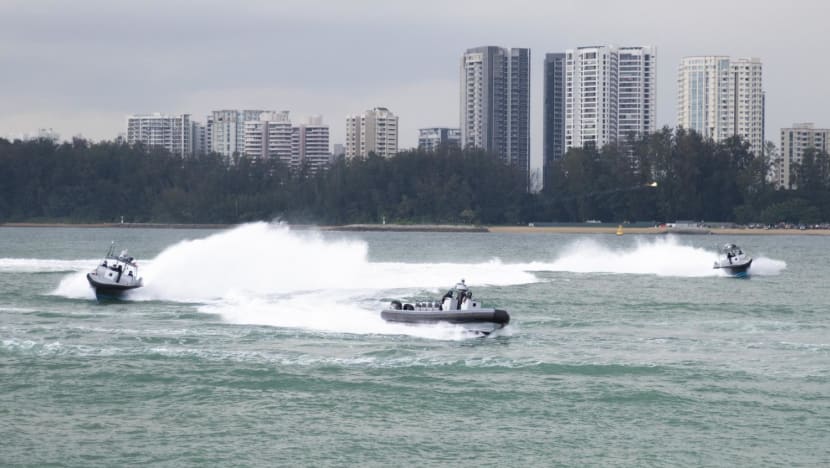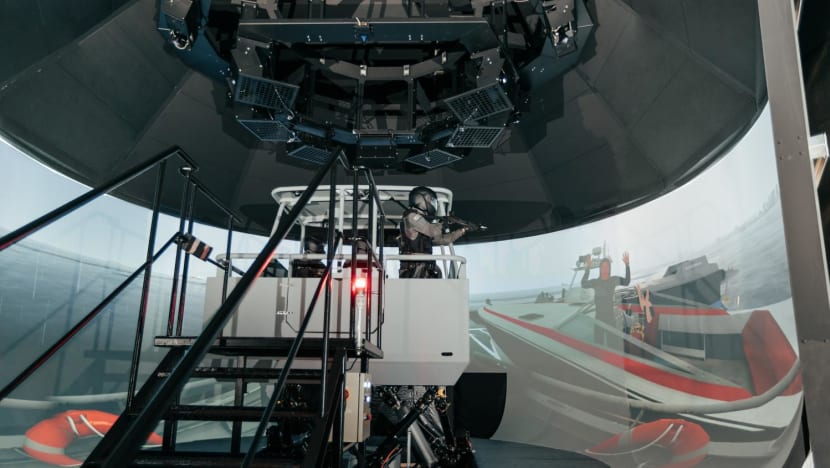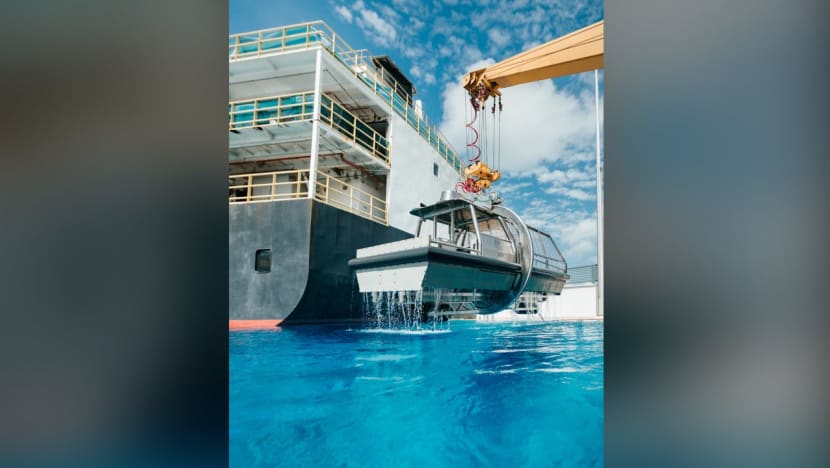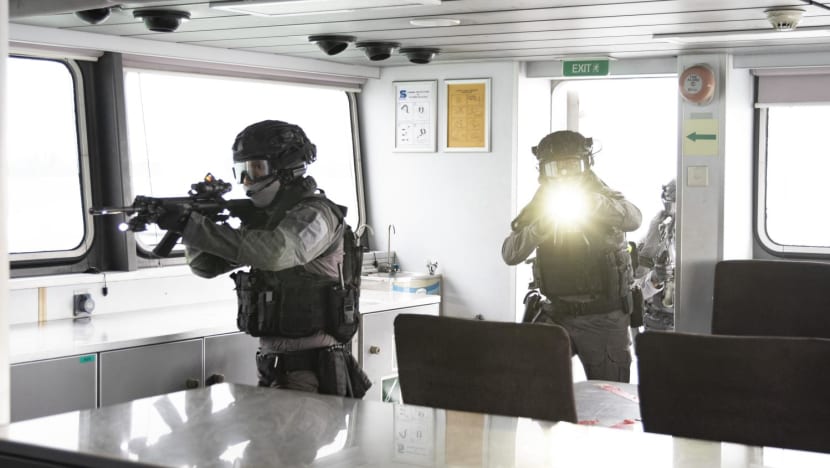Police Coast Guard using new simulator to let officers better handle boat capsize situations
SINGAPORE: Three men were sitting side by side in a boat-like structure when the creaking sound of a motor rang through the room. The structure, located in a pool, swivelled 180 degrees and turned the men upside down.
This was not a scene from an amusement park, but a training session at the Police Coast Guard’s (PCG) headquarters on Brani island. The men, elite officers from PCG’s Special Task Squadron (STS), were now underwater and must find a way out of the structure.
The STS deals with high-risk maritime public security operations, like chasing boats at high speed or boarding suspicious vessels.
In March 2019, STS officers were activated when an unregistered motorised boat entered Singapore waters and speeded towards Punggol Barat, where a man jumped off and continued swimming towards the shore.
When the boatman refused to stop despite repeated warnings, PCG intercepted the vessel and arrested the boatman. The other man was arrested at the fence along the Punggol Barat coastline.
In 2007, two PCG officers died after their boat chased a speedboat that had illegally entered Singapore waters and collided with it. The PCG vessel capsized with four officers on board.
Following an intensive search and rescue operation involving multiple agencies, two officers were rescued with minor injuries while the bodies of the other two were recovered from the water.

This kind of risk is partly why the PCG is using the moving structure, called the underwater egress training simulator, to help STS officers better handle boat capsize situations.
In the event of capsize, officers must properly remove their gear, including their inflated life vests, before swimming out from under the boat.
During the training simulation, the officers underwater had their head almost against the simulator’s floor. With each of them breathing from an emergency oxygen tank, they reached behind their back and jettisoned their life vest, before swimming out from the side.
Officers reacting to a capsize situation sometimes do so in complete darkness while trapped under a boat, amid potentially strong currents and choppy waters.
The simulator, launched in August and built like the PCG’s high-speed PK interceptor boat, recreates these situations to allow officers to train in a realistic yet safe environment.
For instance, the training pool is fitted with a wave generator to simulate currents and various sea states.
“The simulator is able to replicate the physical and environmental conditions that may arise from maritime emergencies such as a boat capsize situation, where officers will experience disorientation within a confined space whilst underwater,” the police said in a news release on Sunday (Nov 14).
A police spokesperson said officers do not have to complete a specific number of hours on the simulator, but that it is part of the training curriculum before they are deployed.
“The feedback we have received so far is that it has been really helpful. It definitely builds their confidence in a very different kind of training setting altogether,” he said.


BOAT HANDLING SIMULATOR
The underwater egress training simulator is not the first time PCG is using technology for training, on top of actual seaborne training involving interception and boarding tactics.
In March last year, it commissioned the tactical boat handling and firing simulator to practise high-risk manoeuvres, surveillance and navigation in different scenarios out at sea.
The simulator is equipped with an advanced physics engine that uses actual vessel performance data to duplicate how high-speed vessels behave in the real world when affected by factors like waves or impacts with other crafts and floating objects.
The simulator also comes with an eye tracker to help trainers analyse officers’ visual focus during stressful scenarios, such as a high-speed pursuit, and give feedback on how to improve.


PCG commander Senior Assistant Commissioner of Police Cheang Keng Keong said then that the simulator will minimise the risks of injuries and accidents.
“The high-risk manoeuvres performed by STS officers during high-speed interception and tactical boarding require STS officers to hone their skills to perfection as there is no room for error during operations,” police said on Sunday.
When asked if the 2007 incident played a part in the development of the underwater egress training simulator, the police spokesperson said it provided some lessons and was part of the consideration.
“But more importantly is actually enhancing the ops capability of our officers out at sea in dealing with certain scenarios such as a capsize drill,” he said.
“It’s really a need for ops requirements that we built this simulator to help train all our frontline officers.”
















